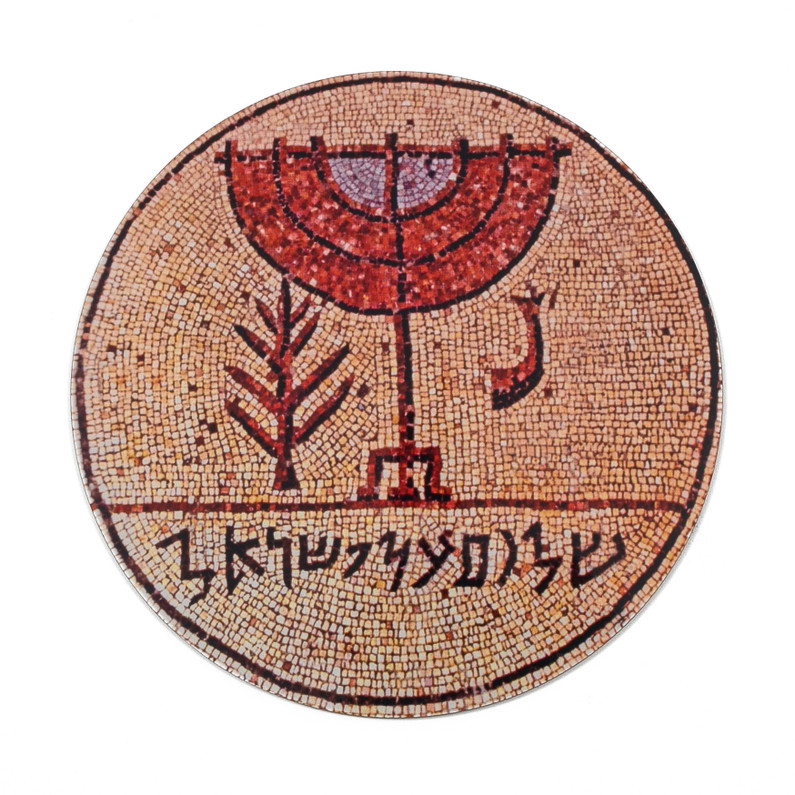The Amazing Origins of Hanukkah Icons
There are many symbols and icons associated with Hannukah. For example, donuts, latkes, Hannukah gelt and the dreidel, or sevivon. But have you ever wondered about the origins of these Hannukah icons?

What would Hanukkah be without the sweet treat of those delicious jelly donuts? In recent years, Israeli bakeries compete to produce the most exciting range, and the toppings and fillings become ever more imaginative. But the first donut recipe actually originated in Europe and dates from the 1500s. By the 1800s it was known as a Berliner in Germany, and Polish Jews called it a ponchik. But in Poland, they ate them as a savoury snack, and because of kashrut laws, fried them in schmaltz rather than lard. It was the Polish Jewish immigrants who brought the ponchik to Palestine where it became a sweet snack and renamed sufganiyah, based on the Talmud’s description of “spongy dough”. Because the festival is associated with the oil of the Menorah lasting for eight days, it is a tradition to eat oily foods and sufganiot have become synonymous with Hannukah.
Potato latkes – or levivot in Hebrew are fried potato pancakes and they have a similar reasoning behind them. These too originated from the middle ages. Traditionally, they were made with potatoes, a cheap and widely available vegetable that could be easily grated, mixed with an egg, some seasonings, and perhaps a little flour, then fried into a tasty savory or sweet snack. But latkes can also be made from other vegetables like zucchini, carrots, and even beetroot.
The tradition of giving money to children is a long-standing one, and probably the one they most look forward to. The custom originated from a 17th century practice among Polish Jewry. Parents would give money to their young children for distribution to their teachers as a token of gratitude. (Similar to the customs of tipping service providers for Christmas.) Perhaps the source of the custom derives from a shared linguistic root in the words Hanukkah (dedication) and hinnukh (education). Over time, as the children asked for a share, parents would give their children a few coins to keep for themselves and by the 19th century, the practice of giving money had shifted entirely from teachers to children. According to an ancient legend, the tradition is linked to the miraculous victory of the Maccabees over the ancient Greeks when they celebrated their freedom by minting coins. Today chocolate coins are also an ubiquitous association with Hanukkah.
The traditional game of dreidel is a family favourite. The word dreidel derives from the Yiddish word drei or spin. Likewise, its Hebrew name, sevivon comes from the word le sovev, to spin. Some believe that it was a game played by Jews under rule of the ancient Greek Empire to fool the Greeks who had outlawed the learning of Torah. But its origins are probably Irish or English. Men in the bars and inns would gamble with a top know as a “teetotum”. The original letters corresponded to the Latin words for “nothing”, “half”, “everything” and “put in”. When the Jews adapted the dreidel, they transliterated the letters into the Hebrew alphabet to represent the words in Yiddish. Then dreidels reached non-Yiddish-speaking Jewish communities who didn’t understand the meaning of the letters and sought explanations. The letters were reinterpreted as an abbreviation of the Hebrew words nes gadol haya sham: a great miracle happened there.
Our latest design, the Hanukkah Decorations Apron, takes its inspiration from all of these symbols, transforming them into an attractive reinterpretation of our tradition. The perfect accessory for this Hanukkah whether you’re making your own latkes, preparing a feast, or serving up a box of choice donuts.
Recent Posts
-
Pesach recipes from Hungary - My mothers tradition
Hungarian cuisine has a rich tradition of Pesach (Passover) recipes, influenced by Ashkenazi customs …26th Mar 2025 -
Pesach Customs from around the world
Passover is celebrated by Jewish communities worldwide, but different regions have developed unique …26th Mar 2025 -
Easy Hanuka Recipes from around the world!
Sufganiyot (Jelly Doughnuts)Ingredients:2 1/2 tsp active dry yeast1/4 cup warm water1/4 cup sugar2 1 …15th Dec 2024


